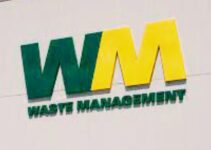Dairy Queen is a fast-food chain American multinational company. Sherb Noble, Alex McCullough, and John Fremont McCullough founded the fast-food chain brand in 1940. Today, we’ll discuss the SWOT analysis of Dairy Queen; it outlines strengths and weaknesses; opportunities, and threats that the company has to face; as a business strategy analysis example company.
Products and services portfolio of Dairy Queen
- Taco salads
- Taco
- Onion rings
- Soft drinks
- Cheese curds
- French fries
- Chicken strips
- Hot dogs
- Hamburgers
- Sundaes
- Cakes
- Milkshakes
- Ice cream
- Soft serve
Subsidiaries of Dairy Queen
- Orange Julius
Statistical facts and figures of Dairy Queen
- Annual revenue: 3.6 billion USD (2023)
- Employees; 2055
- Network: 6800chain stores
Competitors of Dairy Queen
- Milkshake Factory
- McDonald’s
- King’s Homemade Ice Cream
- Dr. Pepper
- Breyers
- Carvel
- Coolhaus
- BonBot
The SWOT analysis of Dairy Queen would analyze the internal strengths and weaknesses of the company; and external opportunities and threats that the brand has to face. Here’s Dairy Queen SWOT analysis as a business strategy analysis example company as follows;
Strengths of Dairy Queen
Some of the main internal strengths in the Dairy Queen SWOT analysis example company as business strategy analysis are as follows;
Large Network
Dairy Queen has established a very large market network comprising over 6800 retail chain stores in over 20 countries across the globe. The large market network of the retail chain stores would help the fast-food brand to serve and target various segments of the customer market.
Portfolio
Dairy Queen has a very large and diversified portfolio comprising burgers, yogurt, cookies, French fries, chicken strips, ice creams, milkshakes, and others. The large and diversified product portfolio would help the fast-food brand to serve various segments of the customer market with diverse needs and requirements.
Differentiation
Dairy Queen has successfully differentiated its products and brand name from the other fast-food chain brands. The company has established a very good and effective supplier network and supplier relationship and it helps the company to smoothly perform its operations and timely deliver the finished goods to the end consumers.
Recognized Brand
Dairy Queen is a well-recognized brand in the fast-food chain industry. The company has been operating its business in the fast-food industry for the past over 75 years. It has allowed the brand to earn the trust and confidence of the customer market.
Marketing
Dairy Queen is highly proactive in running various types of marketing and advertisement campaigns for the promotion of its products and brands. The unique brand slogans and catchy phrases would help the fast-food chain brand attract the attention of customers; some of them are as follows;
- Eat like a Texan
- Well, This is a bit dirty!
- After the DQonquest
- Gary DQlones Himself
Customization
Dairy Queen offers customized cake service on its web platform. The customers could choose the required design, tastes, and style of the cake; the company would deliver the cake to the home address of the customers relevant to their requirements.
Weaknesses of Dairy Queen
Some of the main internal weaknesses in the Dairy Queen SWOT analysis example company as business strategy analysis are as follows;
Limited Market Share
Dairy Queen has a limited market share as compared to other fast-food chain brands. It limits the company’s capability of not taking advantage of potential growth opportunities.
Over-Reliance on the US Market
There is no doubt Dairy Queen is operating its business in 20 countries. However, the fast-food chain brand heavily relies on the US market as its main source of revenue, network, and profitability. High reliance on one market is not a good business and marketing strategy for the brand.
Opportunities for Dairy Queen
Some of the main available opportunities in the Dairy Queen SWOT analysis example company as business strategy analysis are as follows;
Market Expansion
Dairy Queen should expand its fast-food business market into new regions, countries, and markets across the world. Developing countries and emerging markets hold great growth potential for the fast-food business; it would help the company to increase its market network, sales, and growth.
Portfolio Expansion
Along with market expansion, Dairy Queen should also expand its product portfolio by launching new food product lines for the customers. For instance, vegan and organic products are trending, and offering the trending would attract new segments of the customer market.
Strategic Alliance
Dairy Queen should develop strategic alliances and partnerships with other fast-food chain brands similar to the DQ. The joint venture and sharing of resources would help the brand increase its market network, growth, and sales.
Threats to Dairy Queen
Some of the main potential threats in the Dairy Queen SWOT analysis example company as business strategy analysis are as follows;
Regulations
The government regulations are very strict and tough for fast-food chain brands and food processing companies to ensure the health and safety of customers. Dairy Queen should comply with the regulations of different countries to avoid expensive lawsuits and fines.
Tough Competition
Dairy Queen is facing tough competition from competitive brands like McDonald’s, BonBot, Carvel, and Dr. Pepper. They all have established a strong market share in the fast-food industry; their market presence is negatively impacting the growth of the chain brand.
Conclusion: Dairy Queen SWOT Analysis Example Company |SWOT Analysis of Dairy Queen |Business Strategy Analysis
After an in-depth study of the SWOT analysis of Dairy Queen; we have realized that Dairy Queen is the world’s leading fast-food retail chain brand. If you are learning about Dairy Queen SWOT analysis Example Company; then you should keep in mind the abovementioned internal strengths and weaknesses; external opportunities and threats as brand strategy analysis.
References

Ahsan Ali Shaw is an accomplished Business Writer, Analyst, and Public Speaker. Other than that, he’s a fun loving person.


